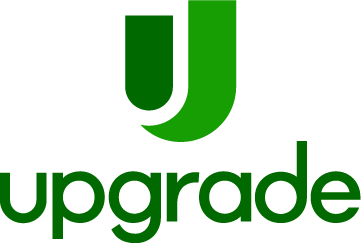Bank Refuses to Close Account With a Pending Overdraft Fee and Continues to Monthy Bill
When customers attempt a debit card or ATM transaction but don't have enough money in their account, the bank can either process or reject the overdrawing transaction. Overdraft laws help determine which of those two things happens, and if the bank can charge you fees.
Below, you'll find an explanation of the laws that govern how banks can run overdraft coverage programs as well as answers to common questions about how overdraft fees work and overdraft protection rules.
Are overdraft fees legal?
It is legal for financial institutions to charge overdraft fees in instances when there isn't enough money in a bank account to cover a transaction. However, some transactions (such as those using a debit card) require that the account holder agree to the overdraft fees before they can be charged. These transactions are covered under bank-run overdraft coverage programs as a result of the overdraft protection law.
If the account holder doesn't opt in to overdraft coverage (i.e., agree to pay overdraft fees for certain transactions), then the financial institution cannot legally charge overdraft fees for those transactions. Instead, the institution would simply decline the transaction.
What is the bank overdraft fees law?
The overdraft protection law stops banks from automatically enrolling customers in overdraft coverage
.
In 2010, the Federal Reserve declared that by default, a bank must reject transactions if an account lacks sufficient funds. However, customers can choose to change the default status and opt in to overdraft coverage, if the bank offers the service. If a customer opts in, their transactions would be approved, but the bank could charge fees.
The law only applies to transactions that are not pre-authorized, such as ATM withdrawals and debit card transactions. Pre-authorized withdrawals, such as automatic bill payments and checks, don't fall under the umbrella of the overdraft protection law and can lead to overdraft charges (also called a nonsufficient fund fee, insufficient fund fee or NSF fee).
What is the Overdraft Protection Act of 2021?
The Overdraft Protection Act of 2021 is a bill that makes it illegal for banks to be deceptive or unfair about their overdraft coverage. Banks are required to provide information about overdraft coverage fees, whether a transaction could be declined if there are insufficient funds, and whether a fee will be charged for a declined transaction.
According to the bill, a financial institution must provide prompt notification about an account's overdraft status
. Also, banks cannot charge overdraft fees that are excessive or expensive; the fees must be "reasonable" and are limited in the number of times they can be charged. This means no more than one overdraft coverage fee per month and six per year, per account, by the terms of the proposed bank overdraft fees law.
When the overdraft amounts and overdraft coverage fees are paid according to the overdraft coverage program, the Overdraft Protection Act of 2021 would prohibit a bank from reporting negative information to reporting agencies about consumers' use of overdraft coverage. As of this writing, the bill hasn't passed in the House or the Senate.
What else you need to know about overdrafts
Is overdraft coverage required?
Overdraft coverage is completely optional. Your bank may offer overdraft coverage for debit and ATM transactions, but you don't have to accept it. If you don't opt in to overdraft coverage, ATM and debit card transactions will be declined by your bank if there's not enough money in your account to cover them, and you won't be charged a fee.
What is 'overdraft protection' vs. 'overdraft coverage'?
Overdraft coverage allows banks to process transactions when customers have insufficient funds. Banks have usually charged a fee of $30-$35 for each of these transactions. But recently, an increasing number of institutions have reduced or eliminated overdraft fees .
Overdraft protection is a bank service that links a checking account with a line of credit, savings account or credit card to prevent an overdraft. If you opt in to an overdraft protection program, you give the bank permission to process an insufficient funds transaction and transfer funds from the linked account in to your checking account to pay for the transaction. The account wouldn't go negative, so there wouldn't be an overdraft fee. But that doesn't mean this scenario would be free.
While fewer and fewer banks charge a fee for this transfer service, some institutions still do — often around $10 each day a transfer is made.
For overdraft protection to work, you'll need to have sufficient money in your savings account or qualify for a line of credit.
How many overdraft options are there?
Customers generally have three choices when it comes to overdrafts:
-
Opt in to overdraft coverage and agree to pay an overdraft fee. Overdraft fees, usually around $30-$35, are for transactions that result in a negative account balance. If there are multiple transactions, the bank may charge multiple fees. For example, with a $35 fee, three overdrafts in one day could result in fees that total $105.
-
Opt in to an overdraft protection plan. With this option, you are opting in to overdraft coverage and also opting in to overdraft protection, which links your checking account to a backup savings account, credit card or line of credit. For transactions that would overdraw the checking account, the bank will transfer money from the backup account or line of credit to the checking account to prevent an overdraft. You might have to pay for overdraft protection transfers; some banks and credit unions charge for these transfers, but some don't.
-
Choose to opt out of all overdraft programs. This is the default setting when a bank account is opened. With this option, if the account lacks sufficient funds, debit card transactions are declined by the merchant and ATM withdrawals are declined by the institution. No fee is incurred by these rejections. If a bank does pay for these kinds of transactions and your account is overdrawn as a result, it can't charge you an overdraft fee.
Why do banks charge overdraft fees?
Financial institutions charge overdraft fees for the service of paying for a transaction that costs more than the amount of funds available in an account; in other words, the bank is loaning you money without charging interest. Sometimes an overdraft fee is referred to as a "courtesy pay" fee.
Here are a few accounts with a range of features.

SoFi Checking and Savings


Deposits are FDIC Insured
Upgrade - Rewards Checking


Deposits are FDIC Insured
Current Account


Deposits are FDIC Insured
Chime Checking Account


on Citibank, N.A.'s website
Citi Priority Account

Learn more about overdraft fees:
Source: https://www.nerdwallet.com/article/banking/faq-overdraft-protection-law-overdraft-fees
0 Response to "Bank Refuses to Close Account With a Pending Overdraft Fee and Continues to Monthy Bill"
Post a Comment